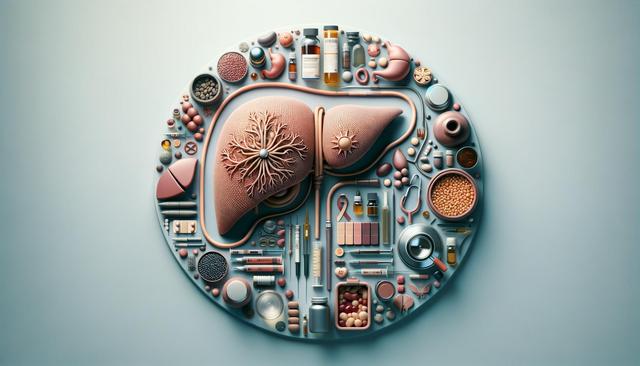What is Liver Cancer?
Liver cancer refers to malignant tumors that begin in the liver, with hepatocellular carcinoma (HCC) being the most common type. The disease typically arises in individuals with chronic liver conditions such as cirrhosis or hepatitis. While some cases are linked to alcohol use or viral infections, liver cancer is increasingly associated with non-alcoholic fatty liver disease (NAFLD). This shift has brought more attention to fatty liver disease treatments and the search for a cure for fatty liver as part of broader cancer prevention strategies.
Liver cancer often presents late in its progression, making early detection vital. Symptoms like weight loss, abdominal pain, and jaundice may appear only during advanced stages. Because of this, individuals with risk factors such as chronic liver disease or known fatty liver should be monitored regularly through imaging tests and liver function screenings.
Major Risk Factors and Causes
Several factors contribute to the development of liver cancer, many of which are preventable or manageable with appropriate care. These include:
- Chronic hepatitis B or C infection
- Long-term alcohol abuse
- Obesity and metabolic syndrome
- Exposure to aflatoxins, commonly found in contaminated food
- Non-alcoholic fatty liver disease (NAFLD)
NAFLD, in particular, has gained attention as a growing contributor to liver cancer. It involves fat accumulation in the liver not caused by alcohol, and it can progress to non-alcoholic steatohepatitis (NASH), cirrhosis, and ultimately cancer. This has led to increased interest in non alcoholic fatty liver disease medication as a preventive strategy. Managing underlying conditions and early intervention remain key components in reducing the risk of liver cancer.
Diagnosis and Staging
Diagnosing liver cancer involves a combination of blood tests, imaging studies, and biopsies. A commonly used blood marker is alpha-fetoprotein (AFP), although it is not definitive on its own. Imaging techniques such as ultrasound, CT scans, and MRIs help detect tumors and assess their size and location.
Liver cancer staging determines how far the cancer has spread and guides treatment planning. The stages range from localized (Stage I) to advanced (Stage IV), where the cancer may have spread to nearby organs or distant parts of the body. Understanding the stage helps medical professionals decide between options such as surgical removal, liver transplant, or systemic therapies. For those with fatty liver disease, early diagnosis and liver monitoring are especially important to catch any malignant developments early.
Treatment Options for Liver Cancer
Treatment for liver cancer depends on the stage of the disease and the overall health of the liver. Some common treatments include:
- Surgical resection: Removal of the tumor if it’s confined to a part of the liver
- Liver transplantation: Considered for patients with severe liver damage and small tumors
- Ablation therapies: Techniques like radiofrequency ablation to destroy cancer cells
- Embolization: Blocking blood flow to the tumor to stop its growth
- Targeted therapy and immunotherapy: Medications that attack cancer cells or boost the immune response
In individuals with underlying fatty liver disease, managing the liver condition is often crucial before and during cancer treatment. This has led to the development of specific fatty liver disease medication that may help reduce inflammation and halt disease progression. While not a direct cure for fatty liver, these treatments support liver health, potentially improving outcomes for liver cancer patients.
Prevention and the Role of Fatty Liver Management
Preventing liver cancer involves addressing its root causes. Vaccination against hepatitis B, avoiding excessive alcohol consumption, and maintaining a healthy weight are all effective strategies. However, the growing prevalence of NAFLD has made management of fatty liver disease a central focus in liver cancer prevention.
Fatty liver disease treatments now include lifestyle interventions such as:
- Regular physical activity
- Balanced, low-sugar diets
- Weight loss programs
- Monitoring and controlling blood sugar and cholesterol levels
Additionally, medical research continues to explore non alcoholic fatty liver disease medication that may reduce fat buildup, inflammation, and liver fibrosis. While there is no definitive cure for fatty liver yet, ongoing studies and clinical trials are testing promising compounds that could change the landscape of liver disease management. By controlling fatty liver disease, the risk of progression to liver cancer can be significantly reduced.




Leave a Reply